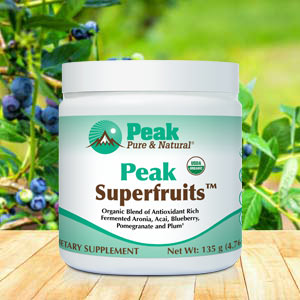Get Easy Health Digest™ in your inbox and don’t miss a thing when you subscribe today. Plus, get the free bonus report, Mother Nature’s Tips, Tricks and Remedies for Cholesterol, Blood Pressure & Blood Sugar as my way of saying welcome to the community!
The ‘diabetes’ spice that beat metformin

So many of my friends and family members suffer from type 2 diabetes. In fact, it seems the list grows daily. Because there’s a connection to lifestyle — and as our waistlines grow, so does our risk of blood sugar problems.
And with that rise in blood sugar problems comes the increase in the number of people on diabetes drugs, like metformin.
These people then have to suffer the side effects — like stomach pain, diarrhea, gas, weakness, muscle pain, headache and even upper respiratory infections — that come with those medications.
But what if I told you there was a plant that researchers believe may be just as effective as metformin at improving glucose intolerance, without its side effects?
The plant that induced ‘antidiabetic activity’
Scientists at the Desert Medicine Research Center (Indian Council of Medical Research) set out to test the performance of the seeds of a plant popular in traditional medicine for blood sugar problems versus metformin.
The plant, Nigella sativa, is popular as a spice. One of its active compounds, thymoquinone (TQ), induced what they called “antidiabetic activity.”
Specifically, it helped reduce appetite, intestinal glucose absorption, blood glucose levels, cholesterol and triglyceride levels, and body weight, and it simulates the secretion of insulin from beta-cells in the pancreas.
But as they say on those old commercials… wait, there’s more.
They even say it helped improve glucose tolerance as effectively as metformin, with no significant adverse effects.
Let’s say that again.
It appeared to work as well as metformin without the side effects!
And to top it off, it stimulated partial regeneration of pancreatic beta-cells. Those are the cells in your pancreas that actually store and release insulin and produce hormones that slow the rate of sugar entering the bloodstream to better control blood sugar levels.
In other words, the seeds of the Nigella sativa plant appear to help the body keep blood sugar problems at bay.
How to use Nigella sativa
So, what is this Nigella sativa plant? How do you find it, and how can you use it?
Nigella sativa is also known by a number of other names you may recognize. These include:
- Black cumin
- Black sesame
- Onion seed
- Black caraway
- Roman coriander
It’s also simply called “black seed” or, in the case of the oil, “black seed oil.”
The oil itself is golden in color and has been used for health purposes since the time of the Pharaohs.
Long before a diagnosis is made, most people experience blood sugar spikes that lead to insulin resistance. That’s when, or before, you want to make changes to your lifestyle, including a sensible diet, exercise and nutrients that can help.
Editor’s note: Are you feeling unusually tired? You may think this is normal aging, but the problem could be your master hormone. When it’s not working, your risk of age-related diseases skyrockets. To reset what many call “the trigger for all disease” and live better, longer, click here to discover The Insulin Factor: How to Repair Your Body’s Master Controller and Conquer Chronic Disease!
Sources:
- Metformin — RxList
- Antidiabetic Properties of a Spice Plant Nigella sativa — Journal of Endocrinology and Metabolism














